
LiceNs D PROj
PRIMARY
sample
SOCIAL SCIENCE
GLO BAL THINKERS
• The Universe
• The Solar System
• The planets
• The layers of the Earth
• The Moon
• How the Earth moves
• The seasons in the Northern Hemisphere
• Earth’s atmosphere
• Weather and climate


• Climatic factors
• Weather maps
• Making and analysing climographs
• World climate zones

• Climates in Spain
• Population
• Classifying the population
• Municipalities and the city council

• Provinces and autonomous communities
• The political system in Spain
• Natural and manufactured products
• The primary sector
• The secondary sector
• The tertiary sector


• What is history?
• Historical sources
• Historical eras
• Prehistory
• History on the Iberian Peninsula: The Palaeolithic period, the Neolithic period and the Metal Ages.
• Pre-Roman civilisations
• Colonisers of the Mediterranean
• Romans on the Iberian Peninsula (I)
THE EARTH PAGE PAGE PAGE PAGE THe populaTion And oRganisaTion of spAin H is To Ry an D p REH is To Ry THE a TM oS p H e R e an D C li M a TE ECono M i C S eCTo RS C l AS si C al A n T iqu iT y i n sp A in
TERM REV IEW
TERM REV IEW
TERM REV IEW
inDeX
8 24 48 4 6 Sustainable cities and communities Life on land Good health and well-being Responsible consumption and production Climate action Affordable and clean energy 44 PAGE PAGE PAGE PAGE PAGE 66 86 104 82 110 CONTENTS SDG
1 3 5 2
THE WORLD AND... YOU! • LEARN ING EXPER IENCE SPECIFIC COMPETENCES • EVALUATION CRITERIA
In The World and... you! pupils learn about renewable and non-renewable energy sources and the importance of clean energy.
In The World and... you! pupils learn about the effects that human activities have on our planet and think about what changes need to be made.
In The World and... you! pupils learn about gender equality and discrimination and reflect on the importance of equal rights for everyone.
In The World and... you! pupils learn about the importance of being a responsible consumer.
In The World and... you! pupils learn about green cities and how sustainable urban planning can improve people’s lives and protect the environment.
In The World and... you! pupils learn about the importance of preserving our history.
INARY PROJECT INTERDISC IPL INARY PROJECT GLOBAL RESOURCES
INTERDISC IPL INARY PROJECT INTERDISC IPL
1,2; 1.3; 2.1; 5.2; 5.3 1.3; 2.1; 3,2; 4.1 3.2; 4.2 1.1; 1.2; 2.1 1.1; 1.2; 1.3; 2.1 1.1; 1.2; 1.3; 2.1
ThE EaRtH

My objectives are:




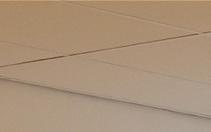



• To learn about the Universe and the celestial bodies in it.


• To identify the different layers of the Earth.

• To understand the Earth’s movements and what they cause.
WaTcH aNd lEaRn!
Which living beings have travelled into space?

eight 7
1 8
The Sun is at the centre of our Universe.
Yes! The Sun gives us solar energy!
Look at the picture and answer the questions.

a) Where are Sol and Ben?
b) What are they holding?
c) What does it show?
1 Listen and read. Our field trip


Yesterday, my class visited a planetarium. It was great! We learned about our galaxy, the Milky Way, and the different planets in it. Did you know that, thousands of years ago, in the 6th century BCE, a Greek philosopher called Anaximander realised that the Earth was round? Then, later, in the 3rd century BCE, Eratosthenes, a Greek mathematician and astronomer, demonstrated that his theory was correct by observing the shadow of a stick on the ground. But, the Greek philosopher Anaxagoras was recognised for this discovery when he observed the Earth’s shadow after a lunar eclipse. It’s amazing how much ancient people discovered just by observing!
Many centuries later, human beings wanted to know more about the Universe. In 1957, the Russians sent a dog called Laika into space in a satellite called Sputnik 2. She was the first living being in space! Later, in 1961, the Russian pilot and cosmonaut Yuri Gagarin was the first man in space. Then, in 1963, a Russian engineer and cosmonaut called Valentina Tereshkova became the first woman in space. Finally, in 1969, Neil Armstrong, an American engineer and astronaut, was the first person to walk on the Moon. Incredible!
Maybe I will travel to space one day. Nothing is impossible!
3 Copy and complete the sentences.
a) Our galaxy is called the … .
b) The … discovered that the Earth is round.
c) The rst living being in space was … in … .
d) The rst man in space was …. in… .
e) The rst woman in space was … in … .
f) The rst person to walk on the Moon was … in … .

9 nine 1
2
Galaxies Solar System Planets The Earth ThE UnIvErSe Let’s explore Layers Movements
ThE UnIvErSe
Refresh What can you observe when you look at the sky?
2 Galaxies, nebulae and stars
Galaxies are a collection of nebulae and millions of stars.
• Nebulae are huge clouds of gas and dust. Stars come from nebulae.

• Stars are very large, hot balls of gas. They produce light and heat.
Our galaxy, the Milky Way, also has:
satellites planets dwarf planets asteroids comets




The Big Bang was a huge explosion that created the universe billions of years ago.
Nebulae produce stars.
1 Choose the correct option to complete the sentences.
a) The Big Bang created the Milky Way / the Universe.
b) Stars are very large, hot / cold balls of gas.
c) Stars don’t emit / emit light and heat.
2 Why is our galaxy called the Milky Way?
ten 10
3 Other celestial bodies
• Planets are spherical, rocky and gaseous. They revolve around a star.
• Dwarf planets are also spherical, but they are smaller than planets.
• Satellites revolve around a planet. The Moon is Earth’s satellite.


• Asteroids are rocky objects that travel through space or revolve around a star or a planet.
• Meteorites are asteroids that collide with planets or satellites.

Small meteorites that disintegrate in the Earth’s atmosphere are called shooting stars.
• Comets are balls of dust and ice. They have tails of steam that shine when they get closer to stars. The most famous comet is Halley’s Comet.
3
Answer the questions.
a) What is the difference between an asteroid and a comet?

b) How are asteroids, meteorites and shooting stars related?
4 4 Listen to the de nitions. Write the celestial bodies. satellites shooting stars comets planets

5 Look at pictures a-d. What types of celestial bodies do they show?

Language Bank





6 What type of celestial body is Pluto? Give reasons for your answer.
The comparative Dwarf planets are smaller than planets.


11 eleven
a b c d
ThE SoLaR SyStEm
Refresh How many planets are in our Solar System?
5 What is a solar system?
A solar system is a star and the celestial bodies that revolve around it.
The star in our Solar System is the Sun. Compared to other stars, the Sun is medium in size. There are much smaller and much bigger stars!
The Sun produces a lot of energy, and provides light and heat to the planets, including the Earth.
1 Look at the picture and answer the questions.


a) Which is the biggest planet? Which is the smallest planet?
b) What is the star in our Solar System called?
c) What does it produce?
d) Which planet is closest to and furthest from it?
e) Which two planets are closest to the Earth?
2


Who named the planets in our Solar System? Who are they named after?


Language Bank






The superlative
Which is the smallest planet?
twelve 12
ThE pLaNeTs
Refresh What celestial bodies revolve around the Sun?


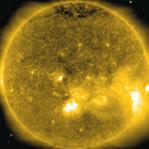

What
are the planets in our Solar System?
There are eight planets in our Solar System. The order of the planets, starting with the one closest to the Sun, is:








Some planets have satellites.
• Jupiter and Saturn have more than sixty satellites each! The satellites are different sizes and have different orbits, the paths they take around the planets.


• The Earth has one satellite - the Moon.
Dwarf planets


Dwarf planets revolve around the Sun, past Neptune’s orbit. The most well-known dwarf planet is Pluto. It was originally considered to be a planet. Other dwarf planets are Ceres and Eris.



1 Complete the sentences with the words below. the smallest closer the biggest smaller
a) Mercury is … than the Earth.
b) Jupiter is … planet in the Milky Way.
c) Mercury is … planet in the Milky Way.
d) Venus is ... to the Earth than Uranus.

2 Choose a planet and look for information about it. What makes it different to the other planets?

Think 3 How can we remember the order of the planets? Create a strategy and share it with the class.

6
THE SUN
Mars Earth
The Moon Mercury
Venus Jupiter Saturn Uranus Neptune Pluto
13 thirteen
Refresh Why is the Earth called the Blue Planet?
7 What is the Earth like?
The Earth is a rocky, spherical body. It is slightly at at the poles. It has three different parts.
• The atmosphere is the layer of air that surrounds the Earth. It is approximately 1 000 km thick.
• The hydrosphere is all the water on the Earth. It covers about 70 % of the surface. That’s why the Earth looks blue from space!
• The geosphere is the solid, rocky, part of the Earth. It has three layers:

– The crust forms the continents and the seabed. The hydrosphere and the atmosphere rest on it.



The mantle is between the crust and the core. It is made up of very hot rocks.
– The core is in the centre of the Earth. It is made up of metals.



1 What are the three layers of the Earth?
2 8 Listen and complete the sentences with the words in bold in the text.

a) The continents are formed in the … .
b) The water on the Earth is found in the … .
c) We nd air in the … .

d) The centre of the Earth is called the … .
e) The … is made up of very hot rocks.
f) The crust, the mantle and the core are in the … .
Think 3 The diameter of the Earth is 12 700 km. Calculate the radius.
Language Bank in the


Prepositions of place
The core is centre of the Earth.
The mantle is between the crust and the core.
fourteen 14 ThE lAyErS oF tHe EaRtH
–
crust Moon Earth mantle core atmosphere atmosphere crust mantle geosphere hydrosphere 12700km geosphere
Refresh What type of celestial body is the Moon?



9 What is the Moon like?
The Moon is the Earth’s only satellite. It rotates on its axis as it revolves around the Earth. This takes twenty-nine and a half days.







Light




The Moon doesn’t produce light. It re ects light from the Sun. But the Sun only illuminates a certain part of the Moon at a certain time.
So, from the Earth, we see a bigger or smaller part of the Moon each day. These are called the phases of the moon.
Tides

The Moon pulls on Earth's water with a natural force called gravity. This pull creates the tides, the rise and fall of sea level.
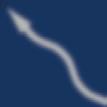
Solar eclipses



When the Moon moves between the Sun and the Earth, part of the Sun’s light is blocked, and the sky slowly gets dark. This is called a solar eclipse.










1 10 Listen and write True or False in your notebook. Correct the false sentences.









Create
2 Create a simple diagram showing what causes a solar eclipse.
3 Look at the diagram. Where does the Moon's light come from?
4 What are the phases of the Moon? Draw a simple picture to show them.

15 fifteen
ThE MoOn Sunlight Earth Sun Moon Reflected Sunlight
No atmosphere or hydrosphere
caused by meteorite collisions
A solar eclipse. The Moon Rocky and spherical
Craters
HoW tHe EaRtH mOvEs
Refresh Does the Earth stay in the same place in space?
11 How does the Earth move?

The Earth revolves around the Sun. It takes 365 days and six hours (one year) to complete a full revolution.
The Earth also rotates on its axis. It takes 24 hours (one day) to complete a full rotation. Because of this rotation, the Sun illuminates some places of the Earth and leaves others in darkness, causing day and night.
1 How does the Earth move? Demonstrate with a partner. Which movement takes longer?
2 Which movement causes day and night?
3 Find out what a leap year is. Why does it occur?

Language Bank









Verbs and nouns

revolves (verb)
revolution (noun)
rotates (verb) rotation (noun)

16 sixteen
The Earth revolves around the Sun.
The Earth rotates around an imaginary axis.
tHe sEaSoNs In tHe nOrThErN hEmIsPhErE










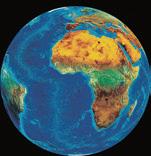

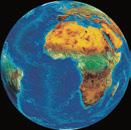
Refresh What are the four seasons?
12
What causes the seasons?


The Earth’s position in relation to the Sun changes during the year. This is because the Earth rotates on a tilted axis. This means that the Sun’s rays reach the Northern Hemisphere at different angles, depending on the time of year.





1
This causes the seasons:


















• Summer (June 21st to September 23rd). Days are longer than nights. Temperatures are hot.

• Autumn (September 23rd to December 21st). Days and nights are the same length. Temperatures are mild.

• Winter (December 21st to March 20th). Nights are longer than days. Temperatures are cold.














• Spring (March 20th to June 21st). Days and nights are the same length. Temperatures are mild.
Answer the questions.
a) When is the Earth closer to the Sun? In winter or summer?



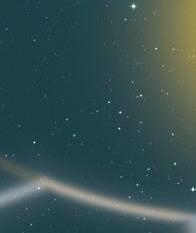

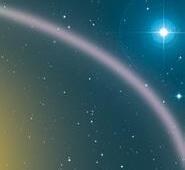



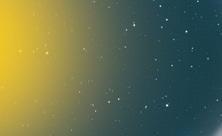


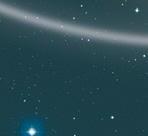







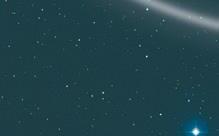

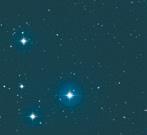
b) Why is the temperature different in summer and winter? Make a drawing to explain your answer.
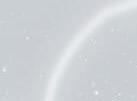
17 seventeen
Sun 20th March Spring May June April March February January Summer July August September Autumn December November October Winter 23rf September 21st December 21st June Day Night Rotation Revolution’
The Northern Hemisphere
The Southern Hemisphere
90 ° 23,5 ° Axis N S
The Earth's axis is tilted (at an angle).
ThE wOrLd aNd... yOu!



1 Look at the pictures. Match them to the nonrenewable energy sources.
Non-renewable energy comes from natural resources that we can’t replace when we have used them. This type of energy damages the natural environment and causes pollution.
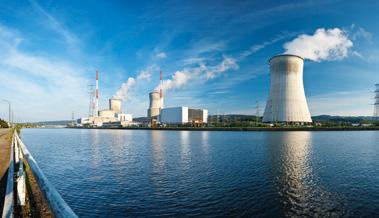
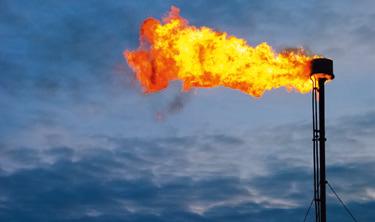


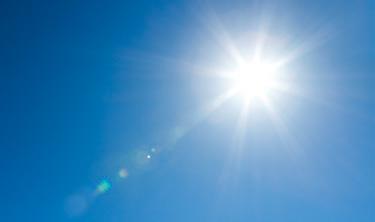
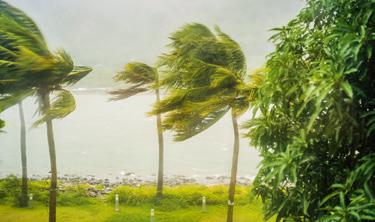
2 What natural resources can you see in the pictures?

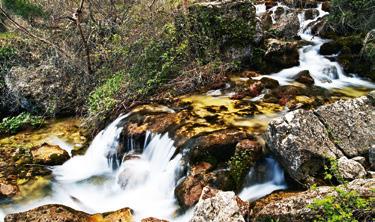
eighteen 18
LoOk!
a c b
tHiNk!
a c b d d
gas nuclear coal oil
3 Look at the pictures and answer the questions.


a) What machine or type of infrastructure can you see in each picture?
b) What natural resource from activity 2 is used in each one?


c) What type of energy do all the pictures represent?
4 Choose one of the energy sources from activity 2 and follow the instructions.
Step one: Investigate how the natural resource is converted into energy.
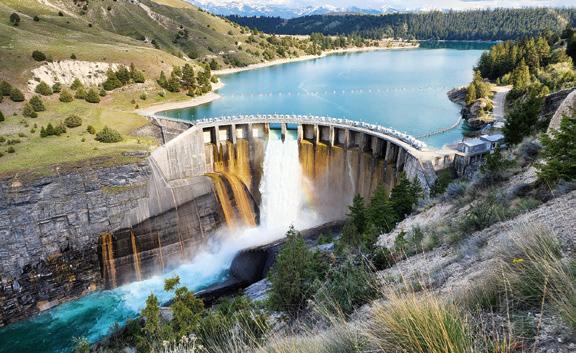



Step two: Create Draw and label a simple diagram to explain the process.
Step three: Present and explain your diagram to the class.
19 nineteen
a c b d
AcT!
The next night...
1
2
3

It’s bedtime Pat. What’s wrong? You look scared.
Is Pat’s bed is uncomfortable?
I don't understand why Pat looks so scared at bedtime!

No! Pat doesn't like the dark! Kim, leave a light on for him!
I can't! It’s bad for the environment… and expensive!
What about solar lamps? They use energy from the Sun!


Solar energy charges the lamp's batteries during the day. Then they light up at night!
What is wrong with Pat?
How do solar lamps work?
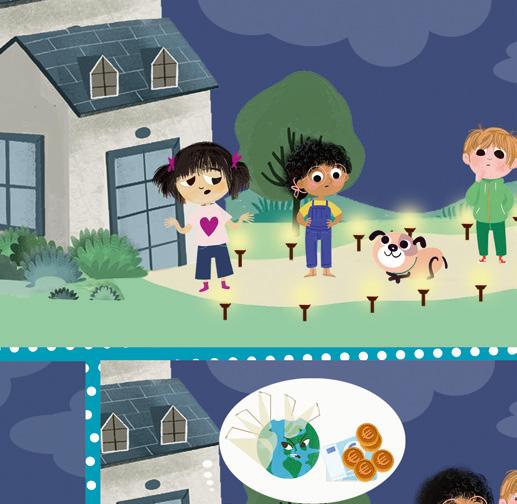


The Sun is a renewable source of energy. Write a list of other renewable sources.

20
tImE! twenty
StOrY
13
Zzzzzzz
1 Think and ll in the gaps.

ThE UnIvErSe
Big Bang
Galaxies Nebulae ? Planets Dwarf planets Comets Meteorites Asteroids ?



? The Sun ? The Moon

Our Solar System
Revolution and ?
21 MaP yOuR IdEaS! twenty-one
LeT'S rEvIeW!
1 Name the celestial bodies. Write sentences to compare them. Use the adjectives below.

bright small big fast
2 Guess the planets.
a) It is the smallest planet in our Solar System.
b) It is called the Red Planet.
c) It is between Jupiter and Uranus.
d) It is the most well-known dwarf planet.

Create 3 Draw a simple diagram to explain how the Earth’s revolves and rotates.
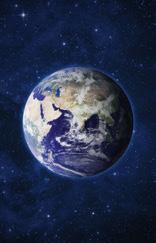

4 Unscramble the words. Then match them to the de nitions of the layers of the atmosphere.
a) It is the layer we can’t see or touch. It contains the air we breathe.
b) It is solid and it has three other layers.
c) It is the layer where we nd the seas, oceans and lakes.


5 Ask ve people in your class when they were born. Which season were they born in?


22
twenty-two
a b c d
E E D S R O Y P H H R M S A P H E R T O E E H O S P E G R E
1 Find the words.
a) It provides light and heat to celestial bodies.
b) It is made up of a star and the celestial bodies that revolve around it.
c) It was a huge explosion billions of years ago.
d) Huge clouds of gas and dust.
e) An asteroid that collides with planets or satellites.
f) They have tails of steam.
g) The layer of the Earth where we can nd metals.
h) It covers 70 % of the surface of the Earth.
i) They are caused by gravity and the Moon.
j) It is when the Moon moves between the Sun and the Earth and part of the Sun’s light is blocked.


k) The movement of the Earth around an imaginary axis.
l) A planet with a ring.
m) The movement of the Earth around the Sun.
n) The season from June to September.
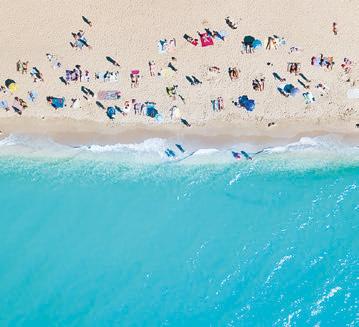
o) The Earth's satellite.
My pRoGrEsS
• I understand what the Universe is.
• I can identify and name the celestial bodies.
• I know what the different layers of the Earth are.
• I understand how the Earth moves.
• I know what causes day and night and the seasons.
Copy the sentences in your notebook

Draw a smiley



gLoSsArY
23 twenty-three
All rights reserved. No part of this publication may be reproduced, stored in a retrieval system, or transmitted, in any form or by any means, electronic, mechanical, photocopying, recording, or otherwise, without the prior permission of the publishers.
© GRUPO ANAYA, S.A., 2023 - C/ Valentín Beato, 21 - 28037 Madrid.


























































































































































